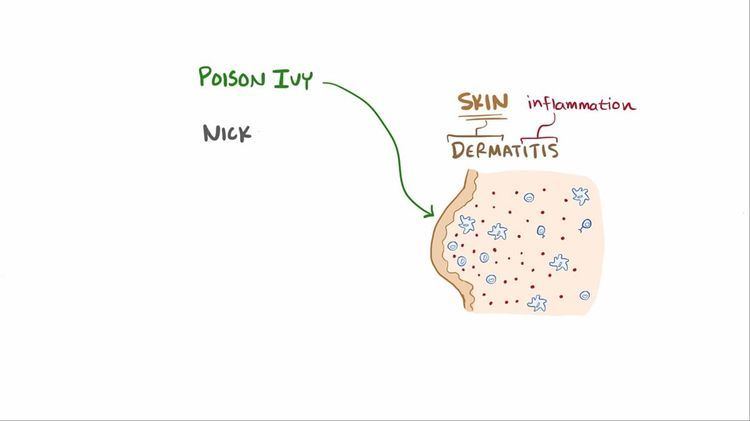MeSH D006968 | ||
 | ||
Type 4 hypersensitivity is often called delayed type hypersensitivity as the reaction takes two to three days to develop. Unlike the other types, it is not antibody mediated but rather is a type of cell-mediated response.
CD4+ helper T cells recognize antigen in a complex with MHC II major histocompatibility complex on the surface of antigen-presenting cells. These can be macrophages that secrete IL-12, which stimulates the proliferation of further CD4+ Th1 cells. CD4+ T cells secrete IL-2 and interferon gamma, inducing the further release of other Th1 cytokines, thus mediating the immune response. Activated CD8+ T cells destroy target cells on contact, whereas activated macrophages produce hydrolytic enzymes and, on presentation with certain intracellular pathogens, transform into multinucleated giant cells.
Examples
An example of a TB infection that came under control: M. tuberculosis are engulfed by macrophages after being identified as foreign, but due to an immuno-escape mechanism peculiar to mycobacteria, TB bacteria are able to block the fusion of their enclosing phagosome with lysosomes which would destroy the bacteria. Thereby TB can continue to replicate within macrophages. After several weeks, the immune system somehow [mechanism as yet unexplained] ramps up and, on stimulation with IFN-gamma, the macrophages become capable of killing M. tuberculosis by forming phagolysosomes and nitric oxide radicals. However the hyper-activated macrophages secrete TNF which recruits multiple monocytes into the battle. These cells differentiate into epithelioid histiocytes which wall off the infected cells, but at the cost of significant inflammation and local damage.
Some other clinical examples:
